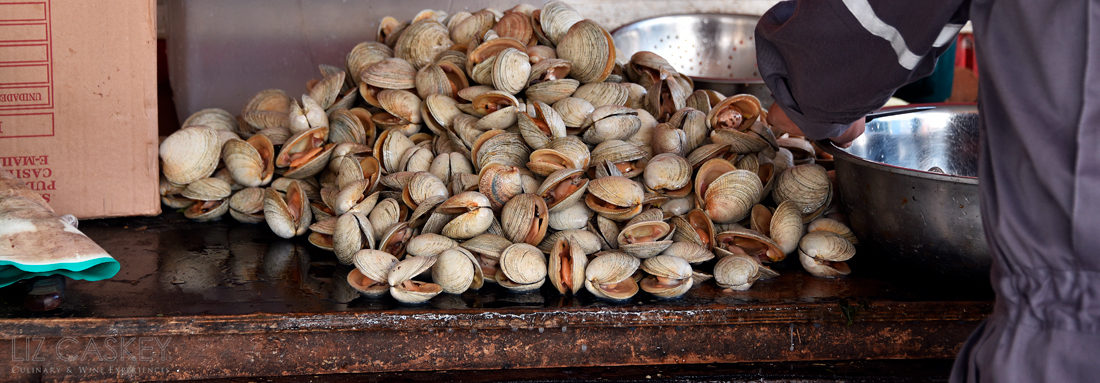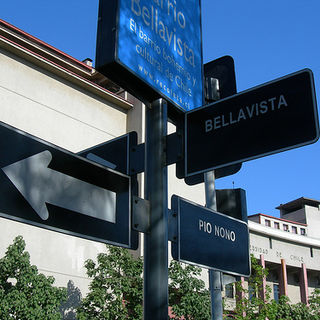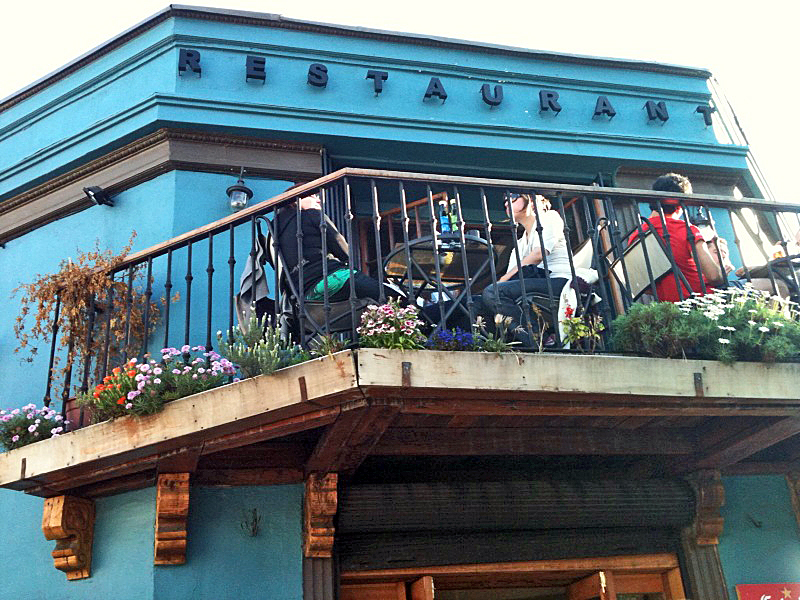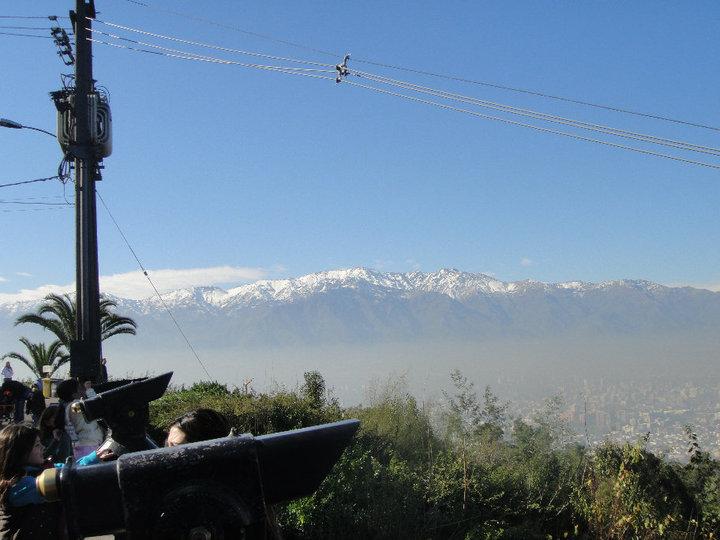It’s been a couple years in coming but it has finally happened. Bellavista has evolved and matured. In fact, I would say it’s going through a total renaissance.
Twelve years ago when I was here as a university exchange student, no doubt the focal point was centered around the cheap taverns serving up frothy schops, draft beers, by the liter to patrons seated around flimsy, plastic tables and chairs lining up Pío Nono—not that some of that still doesn’t happen, but the scene at night was, well, akin to a block party.
While Bellavista certainly is the neighborhood in Santiago for nightlife it has thankfully cleaned up and quickly become one of the burgeoning gastronomic poles and bar scenes in the city—just like in other large urbes like the East Village in New York or Palermo Viejo in Buenos Aires.
Bellavista has long since fascinated local artists, writers, and intellectuals with its bohemian vibe. Colorful, pastel-colored facades; majestic churches’ rolling bells; ornate wooden doors from the early 20th century with intricate bronze work; colorful cités; even newer architecture like Bauhaus-style homes and European-esque mansions where the elite erected their casonas. Bellavista is bordered by the rushing Mapocho to the south, separating it from Parque Forestal and the central Plaza Italia. To the north, the highest point in Santiago, Cerro San Cristóbal, reaches into the city sky with dense foresting on its hillsides and the rickety, picturesque funicular train that transports visitors to the best lookout point in the capital.
As Bellavista has transformed into elegant restaurants, upscale boutiques, trendy bars, and transited theaters, it has not completely sacrificed that Bohemian spirit. Speakeasies can still be found, candles twinkle on café tables, live music is still a hallmark of the clubs, and honestly, the Mapocho River, on the other side, creates a blessed parentheses from the rest of the city. It essentially walks to its own beat.
Let’s go on a mini tour into the heart of this dynamic hood to explore the old and new.
Exit the Baquedano metro station and cross the bustling 10 lanes of traffic forming the Alameda and Costanera. Pass the Mapocho river, full of vendors on weekends selling completos and sopaipillas. On your right is the Bauhaus-style University of Chile law school, an architectural landmark in Santiago. On the next corner, Bellavista Avenue, if you head straight down Pío Nono, you’ll venture into the more “youthful” area where university students congregate to drink beers in the afternoon and evening. Pío Nono is thankfully undergoing a transformation—all bars will have to swap out the cheap plastic terrace furniture for stainless steel and trade the cheesy neon facades for something more subdued with no beer logos. Security of the area has also been greatly increased, with police officers on almost every corner. Look behind the facades to see the gorgeous buildings constructed in the 1930s.
Turn right one block and walk up to Constitución, today, the magnet street in the neighborhood. On your left, you’ll see the Entrance to Patio Bellavista, an open-air complex with boutiques, bars, and restaurant—ideal for completing any shopping on your trip or simply to hang out. If you’re an ice cream junkie, like most Chileans, don’t miss the addictive flavors from Il Maestrale made as traditional gelato and in sinfully yummy flavors. In the patio, you can chill out at Le Fournil Bistro for a glass of wine and listen to some jazz in the evenings, or pick up some kitsche earrings.
Continue down Constitución and you’ll pass several land mark restaurants like Azul Profundo, serving up fresh yellowfin tuna from Easter Island as well as to-die-for seafood from three other regions of Chile. Love sandwiches, do not miss the landmark restaurant Ciudad Vieja, serving up nearly two dozen varieties along with an impressive selection of artisan beers, a big movement right now in Chile (hint, hint drink up Kross!). Stop by the 41-year-old Galindo bar and restaurant to enjoy picadas like parmesan cheese razor clams, topped off with the Santiaguino history the place is known for. Off to the right on Dardignac is a new art gallery, Cian Plataforma Cultural, a minimalist open space flooded with natural light and white walls. Sporting a modern art atmosphere, have a cortado in their cheery café where they hold regular workshops from painting to ceramics.
Specializing in Japanese tempura and Chinese and Vietnamese stir-fries—and the perennial favorite, their 40 varieties of sushi—Etniko is one of Santiago’s most trendy resto-bar scenes. The DJ heats it up with groovy deep house and handsome waiters shaloming among a hipster crowd. At the end of Constitución is the newish five-star boutique hotel, The Aubrey, an urban retreat that lets you escape from the buzz of the city, boasts an outdoor oasis with old Mission style patio terraces with a heated jacuzzi swimming pool, alfresco dining for most of the year, and gardens at the foot of San Cristóbal. It also is home to the restaurant hot spot, Pasta e Vino, the capitalino version of this famous Valparaíso outpost serving up ethereal pasta with a killer wine list (the king crab ravioli is heaven). Here, turn to the right to visit Pablo Neruda’s house and the boutique of Santería.
Don’t miss taking the Funicular to the top of San Cristóbal. For you animal lovers, jump off at the zoo to see the impressive collection of animals; or head up to the top for a sweeping view of the city in the valley below. It reads like a map of Santiago. Opt for the afternoon when the glare of the sun rising over the Andes has passed. And don’t miss the mote con huesillo at the top, a favorite afternoon treat in warm weather.
Shameless plug: For more information on restaurants and ethnic stores like Middle Eastern and filo dough factories, get your copy of Eat Wine Santiago, our all-you-need-to-know city e-guide to Santiago here.

















